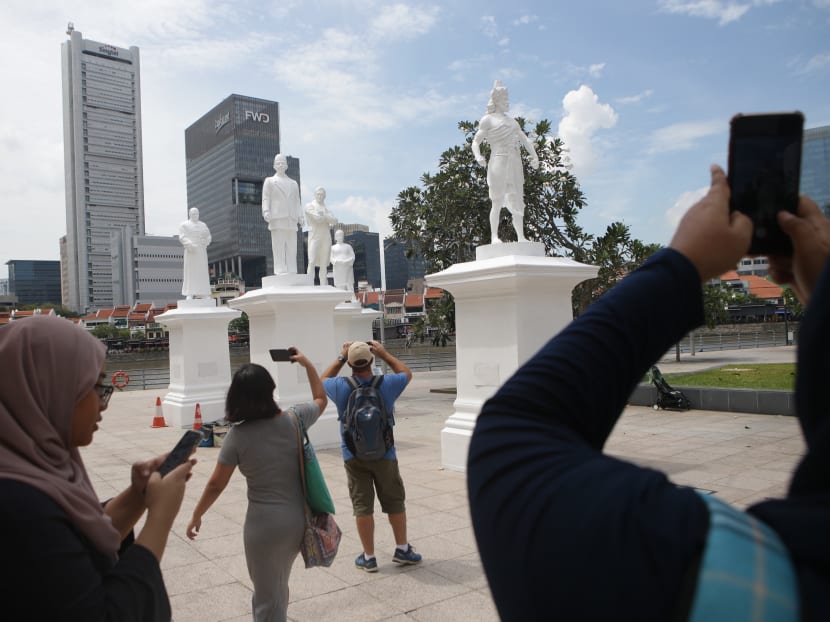Arrival in 1819 was major criterion in selecting new statues: Bicentennial Office
SINGAPORE — The Singapore Bicentennial Office (SBO) had considered including a statue of tradeswoman and philanthropist Hajjah Fatimah to be placed together with the statue of Sir Stamford Raffles, but decided not to in the end because it could not confirm that she arrived in Singapore in 1819.

The four new statues were commissioned by the Singapore Bicentennial Office, which said that they represent the wider cast of historical figures that arrived in Singapore in 1819 and earlier.
SINGAPORE — The Singapore Bicentennial Office (SBO) had considered including a statue of tradeswoman and philanthropist Hajjah Fatimah to be placed together with the statue of Sir Stamford Raffles, but decided not to in the end because it could not confirm that she arrived in Singapore in 1819.
The SBO’s executive director, Mr Gene Tan, said this on Thursday (Jan 10) in response to criticism from some members of the public on why no woman was honoured.
The statues of Sang Nila Utama, the Palembang prince who established the Singapura Kingdom in 1299, and three other historical figures — Munshi Abdullah, Naraina Pillai and Tan Tock Seng — were unveiled along the Singapore River on Jan 4 as part of activities to commemorate Singapore’s bicentennial this year.
Munshi, Naraina and Tan were chosen as they came to Singapore in 1819 and “made literary, religious and cultural contributions to Singapore’s society during their time”, Mr Tan said in response to TODAY’s queries on how the SBO decided on who to honour.
He added: “1819 was also a significant year for other arrivals. We adopted this approach as the three figures are a representation of the diversity and plurality of the communities who came to our shores.”
Hajjah Fatimah was considered, but the office “could not find records confirming that she, or other notable female contributors, had arrived in 1819”, Mr Tan explained.
Ms Margaret Thomas, the chair of the Singapore Women’s Hall of Fame committee, said it was “a pity” that SBO got “so stuck on these dates”.
Given that SBO already included Sang Nila Utama into the quartet even though he arrived way before 1819, Ms Thomas said the office could have found some way to include Hajjah Fatimah.
“They already varied the criteria with Sang Nila Utama, why not vary it a little bit more?” she asked.
“Don’t worry about whether she arrived in 1819. There is no doubt she was definitely here at some point. Don’t get so hung up on the date,” she added.
On the National Library Board’s information site, it is stated that Hajjah Fatimah donated land and money for the construction of a mosque in the 1840s.
While Ms Thomas commended SBO’s efforts in being inclusive and diverse by ensuring that the four statues represent the major ethnic groups in Singapore, she lamented the “missed opportunity” to include a woman, given that women’s contributions have historically been unacknowledged.
She asserted that the addition of the four statues has a high “symbolic value” given that they were being used to kickstart the commemoration of the 200th year since Sir Stamford Raffles’ arrival on Singapore shores.
However, Mr Tan from SBO stressed that the four statues are just part of the “larger cast of contributors” and that many more projects to come will feature women who made a difference in Singapore.








